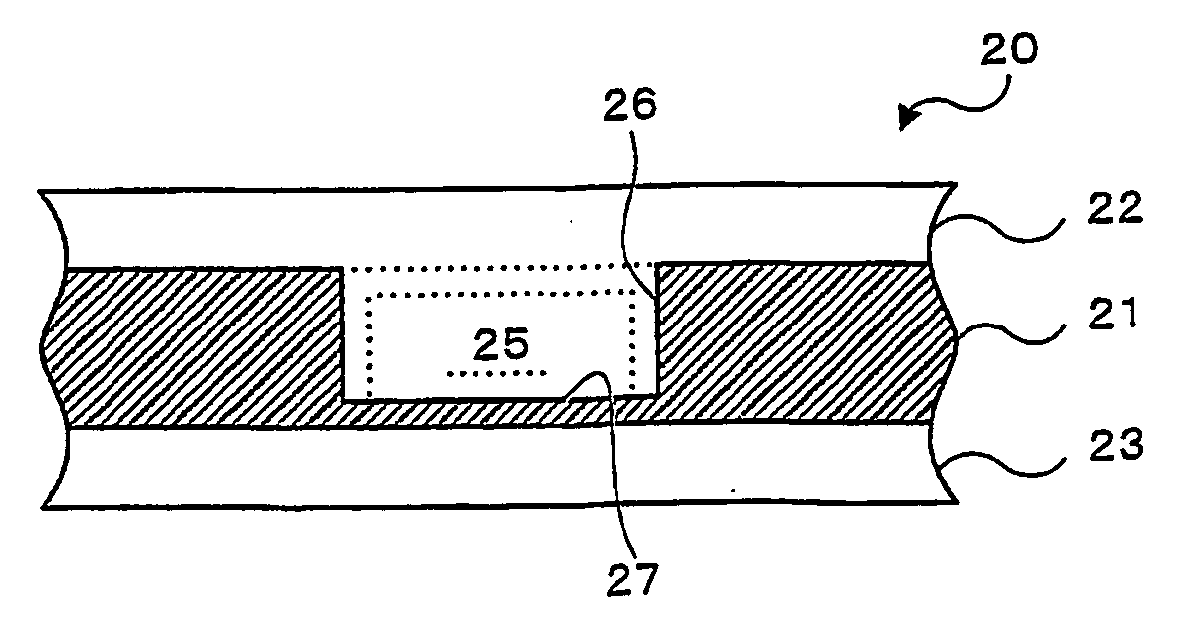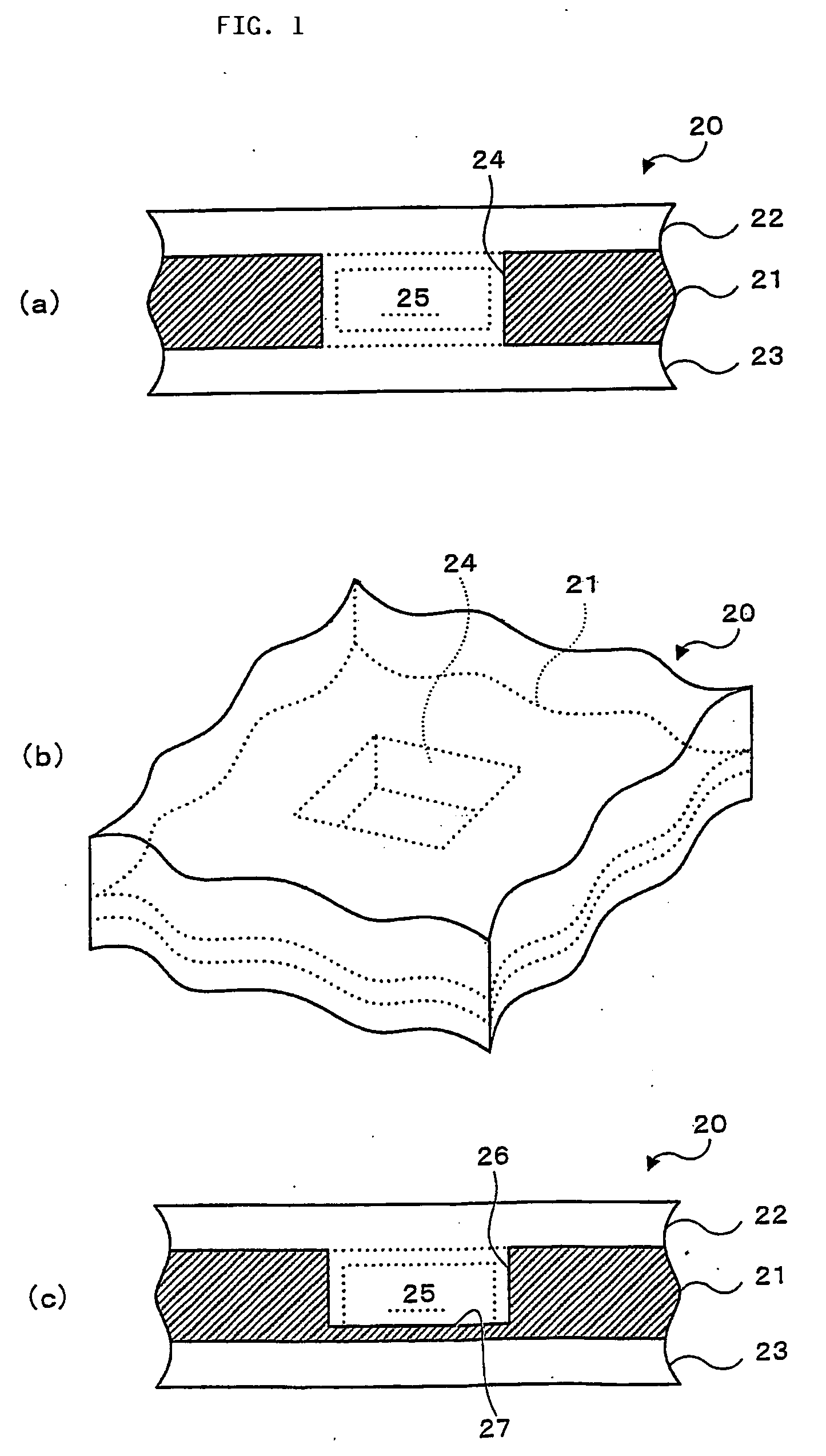Composite multi-layer substrate and module using the substrate
a multi-layer substrate and substrate technology, applied in the direction of printed circuit manufacturing, printed circuit non-printed electric components association, printed circuit aspects, etc., can solve the problems of inconvenient mounting of electronic components, processing costs of grooves or holes, disadvantages of thin-sizing substrates, etc., to increase manufacturing costs and increase electrical properties.
- Summary
- Abstract
- Description
- Claims
- Application Information
AI Technical Summary
Benefits of technology
Problems solved by technology
Method used
Image
Examples
first embodiment
[0050] FIGS. 1A˜1C are main cross sectional plan views and a main perspective view of a composite multi-layer substrate in the form of the embodiment. In this cross sectional view, the composite multi-layer substrate 20 has a “multi-layer structure.” Referring to the example illustration, the composite multi-layer substrate 20 has a three-layer structure comprising a core member 21, a resin layer 22 (hereinafter “substrate front side resin is layer”) and a resin layer 23 (hereinafter “substrate rear side resin layer.” The core member 21 in the shape of a flat plate-like board is composed of a material which has excellent electrical conductivity, excellent heat conductivity and high rigidity. The substrate front side resin layer 22 covers the front surface of the core member 21 (in the direction of the drawing, the upper surface). The substrate rear side resin layer 23 covers the rear surface of the core member 21 (in the direction of the drawing, the lower surface).
[0051] The essen...
second embodiment
[0059]FIGS. 2A and 2B are composition diagrams when mounting an electronic component 25 in a bottomless hole 24 of the core member 21. Referring to FIG. 2A, when the upper surface height position of the core member 21 is assumed to be La and the upper surface height position of an electronic component 25 is assumed to be Lb, as for the differential d (d=La−Lb) of the height, it is desirable to formulate a value of zero or more than zero (namely, La=Lb or any relation of La>Lb). In this manner, since the upper surface height position La of the core member 21 constitutes a position always higher than the upper surface height position Lb of an electronic component 25, it can respond to the loading (load added when the front side resin layer 22, etc. is laminated) to an electronic component 25 on the core member 21 at the time of manufacturing the composite multi-layer substrate 20 and damage to an electronic component 25 is avoidable.
[0060]FIG. 2B is a composition diagram when mountin...
third embodiment
[0066]FIGS. 4A and 4B is a main cross sectional plan view in another section of the core member 21 and an external perspective view of the section. Referring to these drawings, a column segment 33 is set in an optional position (although adjacent to a bottomless hole 24 in the drawing, it is not limited to this) of the core member 21.
[0067] The column segment 33 is originally a portion of the core member 21. Specifically, it is a “remaining part” of the core member 21 produced by having formed a cylindrical dividing groove 34 in an optional position of the core member 21. A column segment 33 can be used as follows. Namely, when a via hole 35, 36 is formed in both the front side resin layer 22 and the rear side resin layer 23 and an electrode 37, 38 is formed in the via hole 35, 36 in both directions of one end side and the other end side of the column segment 33 (island-shaped sections), the electrode 37, 38 are electrically connected via a column segment 33. Furthermore, because t...
PUM
 Login to View More
Login to View More Abstract
Description
Claims
Application Information
 Login to View More
Login to View More - R&D
- Intellectual Property
- Life Sciences
- Materials
- Tech Scout
- Unparalleled Data Quality
- Higher Quality Content
- 60% Fewer Hallucinations
Browse by: Latest US Patents, China's latest patents, Technical Efficacy Thesaurus, Application Domain, Technology Topic, Popular Technical Reports.
© 2025 PatSnap. All rights reserved.Legal|Privacy policy|Modern Slavery Act Transparency Statement|Sitemap|About US| Contact US: help@patsnap.com



